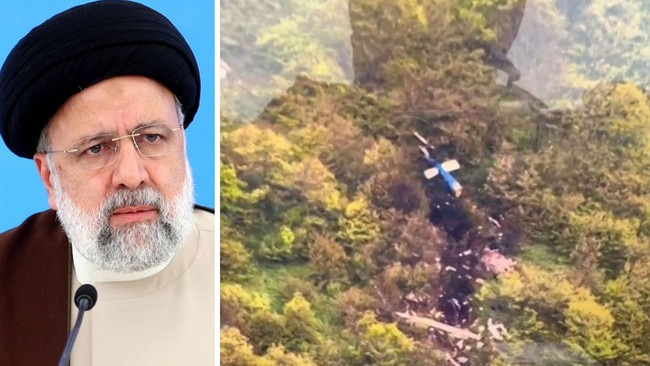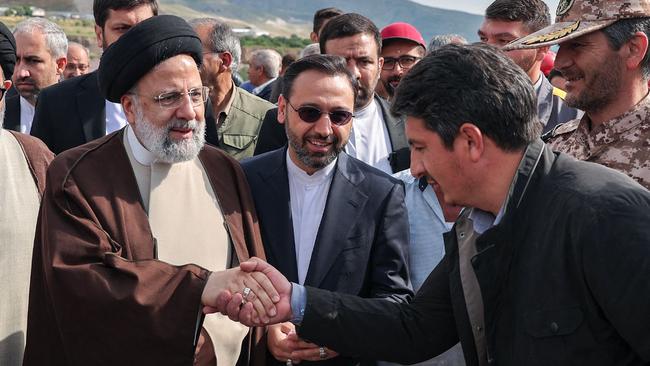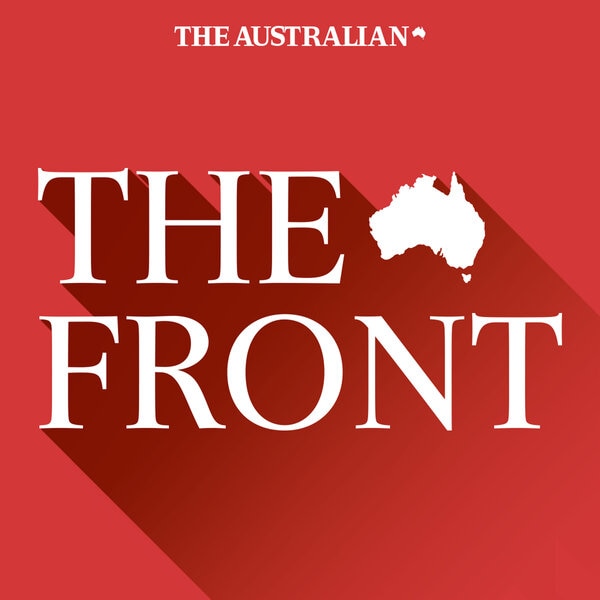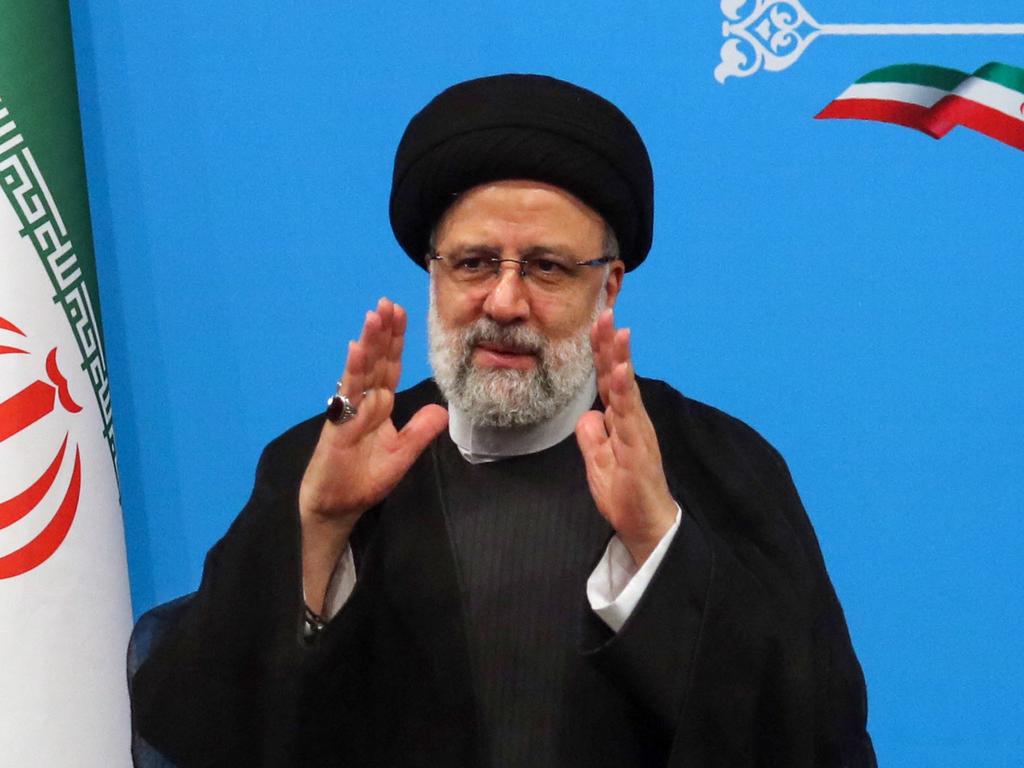Iran state media says President Ebrahim Raisi killed in helicopter crash
Iranian media declares Ebrahim Raisi dead alongside other important leaders after wreckage of his helicopter was found in a mountainous area in the country’s northwest.

Iran President Ebrahim Raisi has died in a helicopter crash in a remote region near the Iran-Azerbaijan border, prompting local firework celebrations and fears of fresh instability in the Middle East.
The Islamic Revolutionary Guard Corps (IRGC) were deployed around important government buildings and town squares before Raisi’s death was announced on Iranian state TV on Monday morning local time, more than 15 hours after it was announced the helicopter had had “a hard landing” in mountainous terrain in heavy fog near the border with Azerbaijan. A Turkish unmanned drone had detected a heat source leading search teams to the crash site.

“The president of the Islamic Republic of Iran, Ayatollah Ebrahim Raisi, had an accident while serving and performing his duty for the people of Iran and was martyred,” Iran’s Mehr agency reported. Iran’s state television said there was “no sign” of life among passengers of the helicopter. The Tehran Times has published a full front page headline “Martyrdom in the Line of Duty” with a pictorial of Raisi and the Iranian flag.
There had been confusion earlier with regime officials saying communications had been made with two people on-board the helicopter but this was believed to be a stalling tactic to prepare and prevent an outbreak of local unrest.

Raisi, known as the Butcher of Tehran, was killed alongside other important leaders, the governor of East Azerbaijan province and Foreign Minister Hossein Amir Abdollahian, East Azerbaijan Governor Malek Rahmati and Ayatollah Mohammad Ali Ale-Hashem, the representative of the Iranian supreme leader to East Azerbaijan.
The wreckage was found in the Arasbaran mountainside in East Azerbaaijan province more than 700km northwest of the Iranian capital Tehran.
Raisi, 63, was deeply unpopular in parts of the country for his role in prosecuting and executing thousands of political prisoners in 1988 and has since overseen Iran’s nuclear developments and the country’s proxy war with Israel through Hamas, Hezbollah and the Houthis.
BREAKING: Iranian President Ebrahim Raisi was killed in yesterday's helicopter crash- IRINN Telegram Channel
— Hananya Naftali (@HananyaNaftali) May 20, 2024
Reports say that the helicopter hit the mountain before crashing as a result of severe weather conditions and fog.. pic.twitter.com/X07rCWTXRz
امدادگران به نزدیک‌ترین Ù…ØÙ„ به بالگرد #رئیس‌جمهور رسیدند#رئیسی pic.twitter.com/v1VB5pv0e1
— خبرگزاری ایسنا (@isna_farsi) May 20, 2024
Most recently he was involved in the violent crackdown against women who had been removing their head coverings in memory of 22-year-old Mahsa Amini who died after being jailed for breaking hijab rules.
“I am telling you that the removal of the hijab will definitely come to an end, do not worry,” Raisi said last year.
Raisi had been touted as the obvious successor to the elderly Supreme Leader Ali Khamenei, now 85 and suffering from cancer.
British MP Tobias Ellwood has warned of fresh instability because Iran’s young population was “not in tune with the regime” and there was “underlying anger”.
“There is discourse between the two, the regime requires force to remain in power, and now there is a bond with Russia,’’ he said.
“This regime is supporting Moscow in Ukraine, and is involved across the Middle East to the frustration of the Iran people, it is a regime investing in Hamas, Hezbollah and Houthis and many of the younger generation are saying why not help us, help our country get stronger.”
Alan Mendoza, an analyst with the Henry Jackson Society told Sky News that Raisi’s death opens the possibility for severe instability within the regime as people jockey for positions of influence.
“He has a long and blood stained history, sending 5000 people to their deaths,’’ Mr Mendoza said.
However it doesn’t appear Raisi’s death will have any impact on the hard line aggression of the regime in its fraught distancing with the United States, United Kingdom and other western allies.
Mr Mendoza said: “Any forced change in top personnel in a regime like Iran which relies on fear and oppression, opens up the possibility of instability … there are numerous factions and that process alone could cause trouble. The supreme leader is the most important, he determines policy, and as long as he is there there will be no change.”
Earlier on Sunday, as news emerged of a “hard landing” of the helicopter, Ali Khamenei tried to calm tensions saying there would be no change to the work of the country.
He said before Raisi’s death was confirmed to the nation: “We hope that God returns the honourable president and his companions to the arms of the nation.”
“All must pray for the health of this group of civil servants. The Iranian nation must not be concerned or worried, there will be no disruption in the work of the country.”
Rescuers had spent Sunday afternoon and into Monday morning trying to reach the site of the helicopter crash, which came down in a foggy mountainside.

Raisi had been returning from a visit to a dam on the Aras river which forms the Iran-Azerbaijan border. There he had celebrated with Azerbaijani president Ilham Aliyev the latest part of a 220km road bridge, called the Aras corridor, linking Azerbaijan to Nakhchivan, which borders Iran.
Rescuers had found it difficult to reach the site hampered by heavy fog and difficult terrain and were forced to head deep into the mountainside on foot because of the muddy conditions.
Upon the news of the crash, social media sites were flooded with some Iranians rejoicing.
Two daughters of Minoo Majidi, an anti-regime protester in the Woman, Life, Freedom uprising killed by government forces in 2022, were shown on X clinking glasses and smiling.
The regime was distributing confused information including whether the helicopter had been found, and whether there had been contact with a person on the helicopter. They also warned Iranians not to distribute any information or rumours in a crackdown on social media which had been flooded with pictures of people celebrating the news of the crash with firework celebrations.
Ahmad Vahidi, Iran’s interior minister, told Iran state TV: “Given the complexities of the region, connection has been difficult, and we are hoping that the rescue teams reach the helicopter and can give us more information.’’
Iran’s Red Crescent sent up drones to try and find the helicopter, and 40 different rescue teams involving the military, the Islamic Revolutionary Guard Corps (IRGC), police, dog and mountain teams headed to the area.
The Iraqi government sent support for the search operation. The European Union’s Copernicus rapid response satellite mapping service was also enacted after a request from Iran.
An aerial search was called off because of low visibility in the dense fog.
Earlier the Iran news agency had said some of the president’s companions on the helicopter were able to communicate with central headquarters, adding this was “raising hopes that the incident could end without casualties”.







